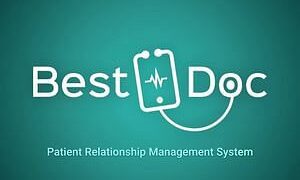By Dr Sanjay Nagarkar
The Covid pandemic led to many challenges for doctors in establishing a strong connection with the patients. It is a known fact that a good doctor-patient relationship is the need of the hour as it can transform healthcare by allowing proper communication, trust, and quality treatment.

The COVID-19 pandemic has brought tremendous changes when it comes to the doctor-patient relationship. It has completely transformed the way how doctors diagnose, treat, follow-up, and interact with patients. The doctor-patient relationship has improved by leaps and bounds as the patient were able to seek timely intervention even at their homes due to telecommunication. Yes, telemedicine has become a boon during the pandemic. It allows the doctor to talk over the phone or video, look at the patient, notice his/her facial expressions, visual signals, and body language and then decide the further course of treatment. This is a great way to minimize the risk of Covid infection in patients and they can only visit the hospital when required. Since social distancing is a norm, teleconsultation has helped the patients to get involved in their examination procedure. They have become attentive, were able to spot warning signs, and report them to the doctor on time. Traveling was difficult during the lockdown and many patients lived far away. So, here telecommunication was the best way to connect to the patients for getting that much-needed relief. Having a good connection with the patients can in understanding their needs and enhance their overall health.
Ways to improve the doctor-patient relationship for better outcomes
- Show some sympathy to the patient: When you have to pass on bad news. In case you have any personal examples relating to the patient’s story then share them with him/her. This way, the patient will be able to relate to you.
- Don’t be in a hurry: Being a doctor, you will have an erratic schedule. But, you need to give some time to the patient to describe his/her symptoms. Or else they will not fully tell the problem and the doctor will not be able to come up with the right line of treatment. Avoid interrupting the patient, as they will not feel like they are valued. Let your patients express their worries and concerns first before responding. So, hold on and be attentive when the patient speaks.
- Be a good friend to the patient: Make sure that the patient is involved in the decision-making rather than just imposing things on them. Try to clear all the doubts of the patient, and help them to weigh the pros and cons of the treatment.
- Help patients deal with their emotions: The doctor will have to be attentive and notice the facial expressions of the patients. Try to calm him/her when necessary. Try to become the patient’s trusted partner. Help them to address their feelings. The patient may feel overwhelmed due to the treatment. So, don’t lose patience and be composed. Try to deal with the patients with an optimistic approach, and they will surely thank you for your kindness. Try to use words that the patients can understand. Do not use medical jargon which will be tough for them to know. Try to use visuals such as photos, infographics, or videos to explain complicated topics to the patients. Confirm with them if they have understood what you explained.
- Make efforts to build a positive relationship with the patient: You need to see to it that you spend at least 10 minutes with each patient, bond with them, comfort them, help them to relax, and explain to them the ways to de-stress, try to smile at them, and be sensitive towards them. The patients will surely appreciate this gesture. They will be happy for sure. Avoid using harsh words and do not demotivate them as it can impact their treatment and recovery process. Show that you care for them instead of only doing your job. Try to be friendly instead of being rude. If the patient is behaving differently then speak to him/her about the problem and try to come up with a solution.
The writer is General Physician, Apollo Spectra Pune
Follow Health In Five on LinkedIn, Facebook, Twitter & Instagram
Subscribe on WhatsApp & Telegram to receive real time updates







































